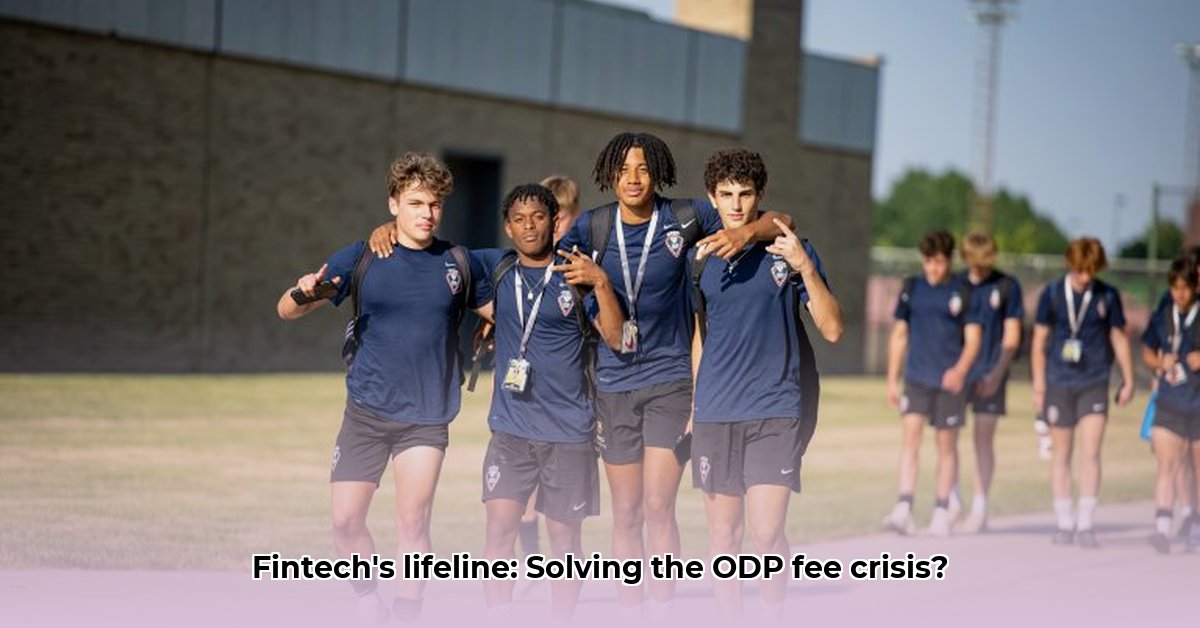
Overdraft protection (ODP) fees—charges incurred when an account balance dips below zero—disproportionately impact low-income individuals relying on government assistance. These fees, averaging around $30 but sometimes reaching $40 or more, can quickly deplete already meager resources, creating a vicious cycle of financial hardship. This article explores this crisis, highlighting the struggles faced by vulnerable populations and examining innovative Fintech solutions that offer a path towards financial stability.
The Devastating Impact of Overdraft Fees
The unexpected bite of overdraft fees can be catastrophic for those living on a tight budget. A sudden medical bill or car repair can easily push an account into the red, resulting in substantial penalties. For families relying on social programs like SNAP or state-level assistance, this can mean the difference between affording groceries and going hungry, or paying rent and facing eviction.
How significant is the problem? One study found that overdraft fees cost low-income families an average of $400 annually, a figure that represents a substantial portion of their monthly income. This isn't just about numbers; it's about real people facing real struggles.
"I was so careful with my money," recounts Maria, a single mother of two in Pennsylvania. "But then my car broke down, and that overdraft fee wiped out the entire week's grocery budget." Her experience underscores the urgent need for solutions.
Fintech: A Technological Lifeline
Traditional banking systems often fail to adequately address the needs of vulnerable populations. However, Fintech offers a promising avenue for change. Innovative mobile applications can provide personalized budgeting tools, proactive low-balance alerts, and even automated fee negotiation options. These apps can empower individuals to take control of their finances and avoid overdraft situations altogether.
What kind of impact could these apps have? Preliminary data suggests that Fintech interventions could reduce overdraft incidences by up to 75% among vulnerable populations, significantly mitigating financial stress.
Dr. Anya Sharma, Professor of Financial Technology at the University of California, Berkeley, states: "Fintech offers a powerful tool to level the playing field. By leveraging technology, we can create more inclusive and equitable financial systems that support vulnerable communities.”
A Multi-pronged Approach to Solving the Crisis
Addressing the ODP fees crisis requires a collaborative effort:
Empowering Individuals Through Financial Literacy: Government programs should incorporate financial literacy training, teaching budgeting skills, responsible banking practices, and strategies for avoiding overdrafts. This proactive approach equips individuals with the knowledge and tools they need to manage their finances effectively.
Harnessing the Power of Fintech: Fintech companies should develop targeted apps integrating real-time budgeting, proactive overdraft alerts, and automated fee negotiation tools. Partnerships between Fintech firms and government agencies can facilitate the widespread adoption of these crucial tools.
Reforming Banking Practices: Banks and credit unions should actively collaborate with Fintech companies to create affordable or fee-less ODP plans specifically tailored to vulnerable populations. This would require a significant shift in business models, but it reflects a moral obligation to support those most in need.
Strengthening Government Regulations: Governments should incentivize partnerships between Fintech and social programs, providing funding and support for their development and implementation. Furthermore, strengthening consumer protection laws will help curb predatory lending practices.
Addressing Challenges and Mitigating Risks
Implementing these solutions presents several challenges:
- Data Privacy Concerns: Fintech apps must prioritize data security and user privacy, complying with regulations like HIPAA (in the U.S.) and equivalent international standards.
- App Adoption Rates: Successful implementation relies on high user adoption rates, which requires comprehensive marketing and outreach programs.
- Bank Resistance: Financial institutions may be slow to adopt new, less-profitable models. Government incentives and public pressure can help overcome this obstacle.
Conclusion: A Path Towards Financial Inclusion
The ODP fees crisis highlights systemic inequalities within the financial system. By combining financial literacy initiatives, innovative Fintech solutions, responsible banking practices, and supportive government regulations, we can create a more equitable and inclusive financial system that protects vulnerable populations from the devastating impact of overdraft fees. This requires a commitment from all stakeholders – individuals, businesses, and governments—to build a fairer and more supportive financial future for everyone.
Key Takeaways:
- Overdraft fees disproportionately affect low-income individuals, exacerbating existing financial insecurity.
- Fintech offers innovative solutions like personalized budgeting apps and proactive overdraft alerts.
- A multi-pronged approach—involving individuals, Fintech companies, banks, and governments—is crucial to effectively address the crisis.